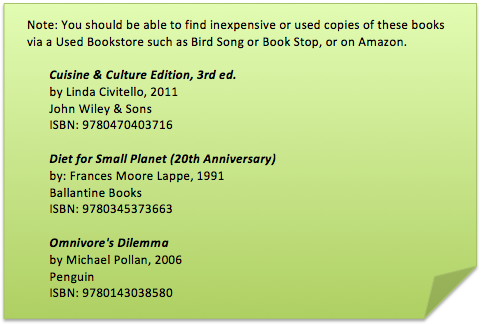Course Description
GEOG 1096 Geography of Food
The Official Description:
This geography course examines the origins of various foods, their geographic role in human history and diets, as well as their cultural aspect in societies. How and what we eat defines who we are as a people, so what does our food say about us? This course looks at the state of food in the world today, particularly in the U.S., and the role of agriculture in our economy, environment, society, and its sustainability in a changing world.




